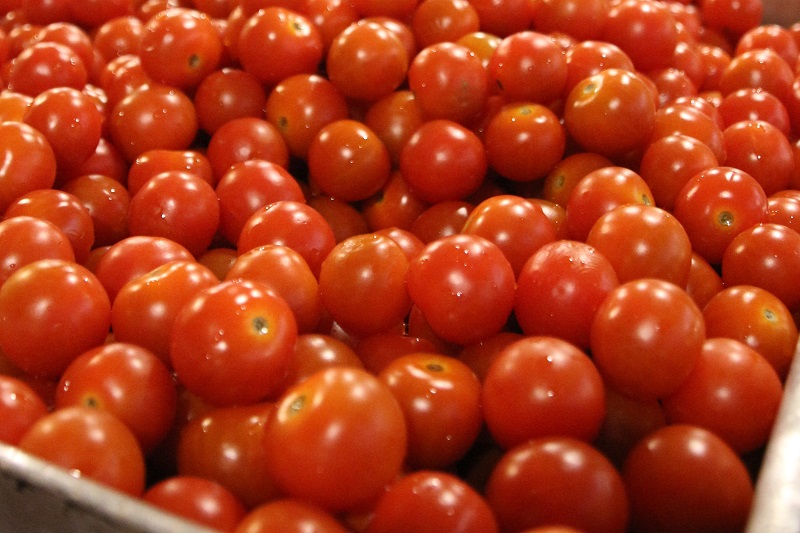 Credit: Chris Young
Credit: Chris Young
Public Health and Agriculture Policy: Why we need a new clause linking public health and farming
For too long agriculture policy has failed in its stated goals to protect farmers or stop harm arising from food production. We have the opportunity in the UK now to address these failings and ensure UK farm policy supports farmers in producing food whilst delivering public benefits like environment and nature, tackling climate change and other benefits. These are defined, somewhat loosely, as ‘public goods’. What seems less well understood is the need to protect public health via agriculture policy.
In the same way that farming fundamentally affects our environment, food consumption is one of the key determinants of human health. Action is clearly needed beyond the farm gate to curb the processing and marketing of unhealthy or unsafe foods. But it is also vital to ensure farm policy promotes healthy food production and does not support continued production of foods or systems that contribute to unhealthy or unsafe diets which have a huge societal and economic cost. (1)
To that end we need to see a specific and unambiguous commitment to public health goals in the Agriculture Bill and, where possible, specific support to enable outcomes beneficial to public health where that does not undermine environmental and other social goals. The amendment proposed below is our initial one – but we are open to discussion of where public health purpose could be placed within the Bill.
The draft proposed amendment to Clause 1
Clause 1, page 2, line 3, at end insert—
“(h) supporting the delivery of improved public health outcomes.
(1A) Support under subsection (1)(h) may include, but is not limited to, measures to:
(a) increase the availability, affordability, diversity, quality and marketing of fruit and vegetables and pulses,
(b) reduce farm antibiotic and related veterinary product use, and antimicrobial resistance in harmful micro-organisms, through improved animal health and improved animal welfare,
(c) provide support for farmers to diversify out of domestic production of foods where there may be reduced demand due to health concerns,
(d) reduce harm from use of chemicals on farms, and
(e) reduce pesticide residues in food.
What could a)-e) mean in practice?
It is as yet unclear what form or balance of support will be available although there is work already underway by Defra to test the proposed new Environmental Land Management Scheme (ELMS) which would deliver the financial support outlines in Clause 1 (1). The Bill defines many forms of support in Clause 2 (‘grants, loan, guarantee or in any other form’). To deliver on the 1.1 (h) we could see some of the following as examples:
a) Measures to increase the availability, affordability and accessibility of UK-grown and sustainably produced fresh fruit and vegetables, nuts and pulses, for example:
- Grants for marketing, skills, infrastructure for on farm processing and marketing and for off farm local supply chains, educational visits support for helping farmers to gain the expertise in selling to public canteens
- An equivalent to the EU Fruit and Vegetable Aid Scheme. As a member of the Fruit and Veg Alliance, we would like to see a replacement scheme more widely available, with a lower output threshold for entry so that smaller businesses can benefit too.
- Public procurement standards should be strengthened, incorporating ‘less but better’ meat, and more local sustainably produced fruit and vegetables.
- Stimulating demand for British and local vegetables, pulses and fruits through public procurement
- Implementing Defra’s Balanced Scorecard across the whole public sector and requiring procurement decisions to place a weighting of at least 60% on quality relative to cost would channel an extra £200m into British farming.
- Re-specifying the School Fruit and Veg Scheme so that a higher percentage of produce is British, local and organic would shorten supply chains, reduce pesticide levels, and make the produce more appealing to children.
- Doubling the number of Food for Life Served Here meals to 3.6 million meals per day would grow the market for assurance schemes including Red Tractor, LEAF, RSPCA-assured and organic, while supporting healthy eating.
- Antimicrobial resistance: With livestock accounting for around 40% of UK antibiotic use, support is needed, alongside stronger regulation, for the improvements to animal health, husbandry, and housing required to reduce the need for antibiotics, and to help farmers transition to extensive, high welfare farming systems such as organic, which use far fewer antibiotics:
- Banning the routine, preventative use of antibiotics in livestock farming, setting targets to reduce farm antibiotic use 50% by 2020 and 80% by 2050, and imposing restrictions on animal products imported from countries with less rigorous requirements on antibiotics, would help to diminish the threat of antimicrobial resistance.
- Promoting organic and equivalent accredited production systems which use significantly less antibiotics as a result of the system, and introducing transition funding to support farmers to move towards less intensive systems, would help reduce antibiotic usage. Supporting farmers in transition to new systems.
- Healthy sustainable diets – in the longer term a vision for UK dietary health should include reference to shifting diets away from over-consumption of certain products and eating less but better levels (eg reducing production of sugar in line with need to reduce high sugar, fatty, salty food consumption; shifting to less and better eg high welfare, meat and dairy). These could have additional benefits of reducing costs of ill health and reducing greenhouse gas emissions. Farm policy needs to reflect that longer term objective through supporting farmers in diversifying where needed to reflect these shifts.
- Reduced harm from use of chemicals on farm - long-term pesticide exposure has been linked to the development of a range of diseases including Parkinson’s, asthma, depression and anxiety, and cancer. We need to ensure pesticide authorisations are based on a strict interpretation of the precautionary principle; maintain a hazard-based (rather than revert to risk-based) approach to pesticide authorisations and phase out the most Highly Hazardous Pesticides. In addition we could provide incentives for farmers reducing and replacing chemicals. For worker and community exposure we need to create a human health monitoring system for those that routinely work with pesticides, including farmers, farmworkers and amenity operatives and establish a reporting system for others exposed to pesticides including the general public, farming families and rural residents.
- Reduce pesticides residues in food – to reduce the health risks via consumption we need to decrease food pesticide residues via the above tools to reduce use on farm and in storage and transit.
Additional public health areas:
- Improved nutritional profile of agricultural products sold as ingredients – via support for systems known to add nutritional qualities, for research and development of new varieties and cultivation.
- Nature-based health promotion: supporting nature-based social prescriptions, including farm-based interventions, making additional funding available to farmers to host visits - including school visits, and visits through, for example, Care Farming UK
- farm-based social prescriptions, including farm-based interventions, and making additional funding available to farmers to host visits (including through Care Farming UK), would benefit public wellbeing.
- Linking farming and nature within the Nature Friendly Schools programme by understanding ‘nature visits’ to be farm visits will benefit child wellbeing and help children to learn where food comes from.
- Promoting a ‘whole school approach’, such as is embodied in the Food for Life School Award, which involves children in food growing and farm visits, has been shown to result in increased consumption of veg and fruit.
The opportunity for increasing UK fruit and veg
Greater fruit and vegetable consumption is promoted to improve health and lower the risk of serious problems such as heart disease, stroke and some cancers. The UK eats 9.3 million metric tonnes of fruit and veg per year, of which 5.5 million metric tonnes are imported. Our national fruit and vegetable consumption would need to increase by 64% to be in line with the Government’s dietary guidelines. Analysis shows that to help us meet the Government’s dietary guideline of ‘seven a day’ (15 million metric tonnes), UK farmers have the opportunity to grow two million more tonnes of fruit and vegetables each year, amounting to 25 billion more portions and increasing the value of the sector to £3.1 billion, a reasonable figure that recognises that the UK will always import some produce.
Of all of the sectors in the UK food supply, fruit and vegetables have the biggest trade deficit and will be uniquely affected by any new trading arrangements resulting from the UK leaving the EU. Thirty years ago, 83% of the veg we ate came from the UK; now it is 54%. 17% of our fruit supply is UK grown. Future trade arrangement could affect costs and make cheaper imports likely but could also add costs via tariffs. The Food Foundation found that future WTO tariff considerations could mean the equivalent of 46% of the entire food budget of the poorest 10% of the population could be taken up with fruit and veg costs.
This all creates a potentially huge imperative not only to increase production of existing varieties but to expand the number of varieties grown, ensuring environmental standards and no harm to wildlife, to stimulate consumer interest and engagement in quality British produce. Horticulture has had the least support from the public purse over recent decades (1% of £3 billion), and this needs to change. In addition to substituting imports by making British horticulture more competitive, there is also an opportunity to achieve even greater gains in the British horticulture sector by driving up demand. A growing movement of towns and cities are actively promoting fruit and veg consumption and more production especially stimulated closer to urban areas would be ideal.
Whilst increasing the land under fruit and vegetables would require only a small additional land take as the sector is highly productive, there are environmental implications which need to be avoided through safeguards or regulation built into the final schemes and via the Environmental Bill regulations. Sustain does not want to see unfettered trampling of key high nature value farming areas for horticulture production. Environmental impacts could potentially be negative with greater use of polytunnels, herbicides, pesticides and mechanisation. Support must be designed to maximise the use of better approaches such as Integrated Pest Management, low impact machinery and maximise biodiversity outputs from, for example, multi-crop field cropping and orchards. More work is needed to enhance the environmental outcomes from land under horticulture.
To assist in preventing diet-related chronic diseases like heart disease and diabetes. This would reduce the financial burden in the NHS: obesity costs the NHS in England more than £6bn per year, and is forecast to reach £10bn by 2050. Diabetes adds on an additional £14bn in costs per year. On average, our fruit and veg consumption needs to increase by 64% to be in line with the Government’s dietary guidelines - which amounts to seven helpings of fruit and vegetables per day. At present only 1% of the UK agricultural budget is spend on horticulture.
We are asking people to let their MP know they want a public health purpose specifically in the Bill.
1. Scarborough, P., Kaur, A., Cobiac, L., Owens, P.,Parlesak, A., Sweeney, K., Nutrition, S. A. C. in. (2016). Eatwell Guide: modelling the dietary and cost implications of incorporating new sugar and fibre guidelines. BMJ Open, 6(12), e013182. https://doi.org/10.1136/bmjopen-2016-013182
October 2018
The Sustain alliance’s work on healthy and sustainable farming policy is part of our Farming and Food Campaign and sits in our Campaign for a Better Food Britain, contact Vicki Hird: vicki@sustainweb.org
Produced with the support of the Friends provident Foundation
We want everyone to be able to enjoy food that is good for our health, produced in a way that supports good livelihoods, reduced waste and greenhouse gas emissions, high animal welfare and restoration of nature.
Sustainable Farming Campaign: Sustain encourages integration of sustainable food and farming into local, regional and national government policies.
Sustain
The Green House
244-254 Cambridge Heath Road
London E2 9DA
020 3559 6777
sustain@sustainweb.org
Sustain advocates food and agriculture policies and practices that enhance the health and welfare of people and animals, improve the working and living environment, promote equity and enrich society and culture.
© Sustain 2024
Registered charity (no. 1018643)
Data privacy & cookies







